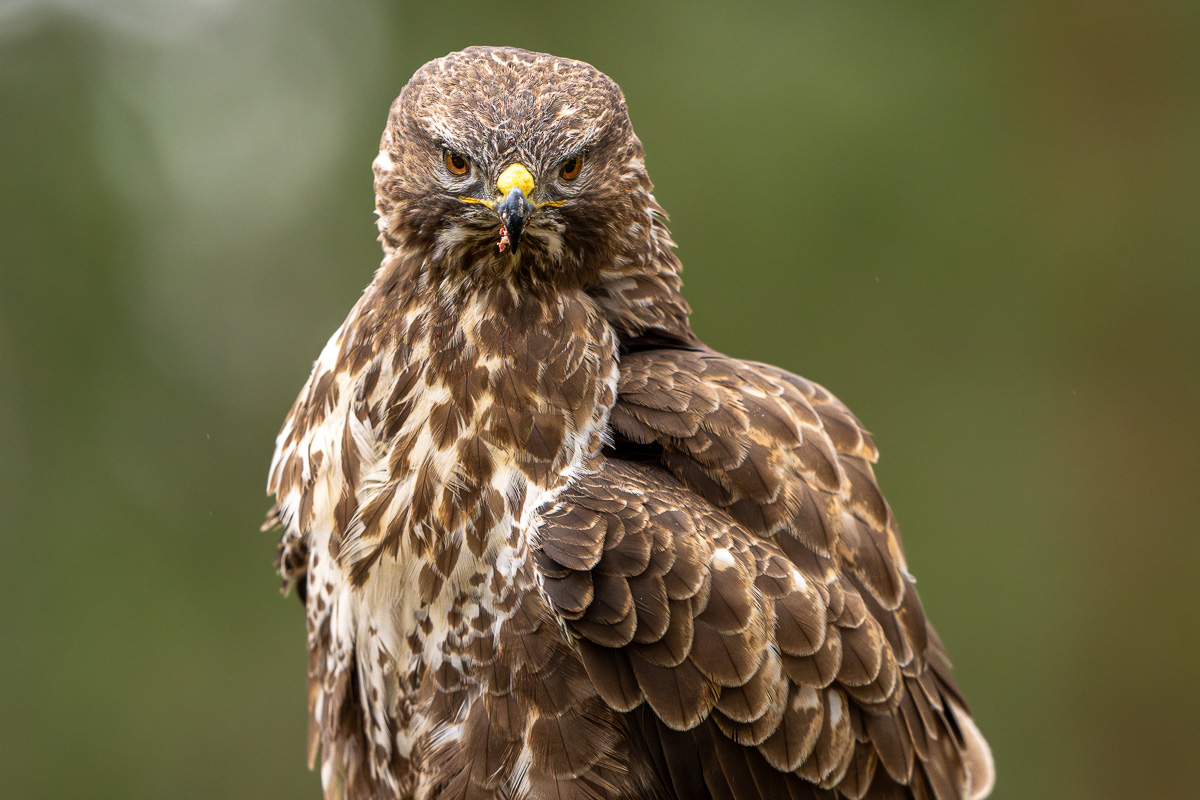GOSHAWK
The Goshawk (Accipiter gentilis) is a powerful raptor with a wingspan of 90-130 cm. It has a striking appearance with a blue-gray back and a white underside striped with dark bands. Its intense yellow eyes add to its impressive and commanding look. The goshawk primarily hunts medium-sized birds and small mammals, using its agile flight to navigate through the forest in search of prey. Admired for its striking plumage and efficiency as a raptor, the goshawk is a majestic and captivating bird to photograph.
Note that both Goshawks and Buzzards are photographed from the same hide!
Season for Photographing Goshawk
The season for photographing the Goshawk extends from November to the end of April. Note that an extension of the season may be possible. All available months are generally good for photographing the Goshawk, but the winter months are the best. During this time, Goshawks have also become accustomed to the activity at the photo hides. If you want to capture the Goshawk in snow or a frosty landscape, January and February are recommended, but snow and frost can also occur in November, December, March, and April.
November is an excellent time to get fantastic photos of the Goshawk in a fall landscape with changing colors of red and yellow.
Goshawks are frequent visitors to the hide and the feeding station, where they can stay for extended periods and feed if not disturbed by Buzzards. The Goshawk tends to visit approximately every other day on average but is almost always present daily during the winter. To get the best photographs of the Goshawk, two sessions are recommended, but the chance of photographing them in just one session is also very high.
And don’t worry about the cold! The hide is equipped with a gas heater to keep you warm.
Camera & Lenses
The choice of focal lengths is up to you; sometimes you might want to get really close, while other times you may want to capture more of the surrounding landscape. I recommend using around 400-600 mm for portraits and about 200-300 mm to include more of the environment around the Goshawk.
The Goshawk comes down to a specially built platform where bait is placed to attract it. The distance from the platform to the hide is about 10 meters, but the Goshawk may sometimes land on one of the small bird feeding stations, which are much closer—just a few meters from the hide. The platforms are mounted on nearby pine trunks and are carefully positioned for optimal backgrounds. Perches, stones, and other elements are regularly swapped to create new photo environments.
The Goshawk hide is also equipped with artificial lighting, allowing for fast shutter speeds even during the darkest morning hours. There is also a water reflection (when it is not frozen) where the Goshawk can come down to drink.
Times for Goshawk
You will enter the hide approximately two hours before sunrise (note that this timing may vary depending on Goshawk activity). You will leave the hide about one hour after sunset.
Things to Bring to the Goshawk Hide
The goshawk hide has plates where you can mount your tripod head or use the available bean bags. This hide is primarily designed for one or two people, with overnight stays possible for one person. Be sure to bring something to eat and drink. A flashlight or headlamp is also a good idea.
What Else Can You See and Photograph?
Är gömslena endast för fotografer?
Du behöver inte vara fotograf för att njuta av att sitta i ett gömsle och titta på rovfåglar. Det är en fantastisk upplevelse även utan kamera. Däremot är gömslena designade med fotografer i åtanke, med många öppningar för objektiv, monteringsanordningar, bönpåsar osv. Alla mina gömslen är noggrant planerade för att ge dig de bästa vinklarna och de mest vackra bakgrunderna möjliga.









